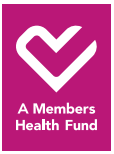Your Personal Information
Your Personal Information
How we handle your information
We only collect information that we need to keep your membership up to date and give you access to health services. We don’t collect personal information unless we ask you first. And we protect your personal details by taking the following steps;
Our computer systems and other records are only accessed by Navy Health (“NH”) staff who need this information.
All NH staff have unique passwords to get into our systems, and these passwords are regularly changed.
Once you login to the Member Portal section of our website, you’re accessing a secure environment.
We use firewalls, virus scanning and other security tools so that unauthorised people can’t access our systems.
If we send your information outside Navy Health its only to trusted parties we hire to provide you with information or services (for instance, we use a mailing house to send some of our letters, and we sometimes use nursing providers to provide home services to members who need them). In all cases, we have strict confidentiality agreements with these companies to protect your personal information.
We have secure storage for all hard copy or digital records of your personal information.
When we don’t need to store your personal information any more, we make sure it is destroyed in a secure way.
Email Security
If you receive Navy Health information by email, there are some things you need to be aware of. Email is a fast, easy and green way to get your Navy Health letters and other information. Here are some of the things we do to make sure your email communications are as effective as possible. We’ve also included some tips for you.
Keeping your personal information safe
You need to know that it’s possible, (even if it’s unlikely) that emails can be intercepted by someone else. For this reason, we make sure we don’t send any sensitive personal information by email and we’ll send you paper copies of any really important letters.
Making sure you get our emails
There might be times when we can’t deliver an email to your inbox. For example, our email might ‘bounce’ back to us because your inbox is full or there may be problems with your email server. If this happens and we get an error message, we’ll automatically mail you a paper copy instead.
Tips
If you’re using your work email address, your company might have a firewall or spam filter that traps certain emails from outside. Again, we might not get an error message from them to tell us the email was blocked. If this happens, you might want to think about using a personal email address instead.
Make sure we have your current email address. You can let us know your new email address by emailing us at query@navyhealth.com.au or by logging into the Member Portal at members.navyhealth.com.au or by giving us a call on 1300 306 289.
Making sure you can read our attachments
More security tips
Use a password to login to your computer, so other people can’t access your email.
The best passwords are a mix of letters and numbers and don’t have easy to guess information (like your name, birthday or children’s names).
Keep your passwords in a safe and secure place.
Don’t click on any email asking you to login or for personal information. Navy Health will never ask you to do this by email. If we need you to receive or give us any sensitive information, we’d only ask you to login to our secure Member Portal on the navyhealth.com.au website.
Set up your email spam (junk mail) filters to help protect you from getting hoax or spam emails.
Use anti-virus or anti-spam software. Contact your Internet Service Provider (ISP) to see if they offer a spam filter service. Whatever you use make sure you add navyhealth.com.au to your safe senders list.
Set your virus protection to scan new files and attachments before you open them.
Keep your security software (like virus protection, spam filters, anti-phishing software and those sorts of things) regularly updated. They are always updated the software to make sure you’re protected from new threats.
Don’t open or install files you get from someone you don’t know or trust. Be extra careful when you open attachments.



